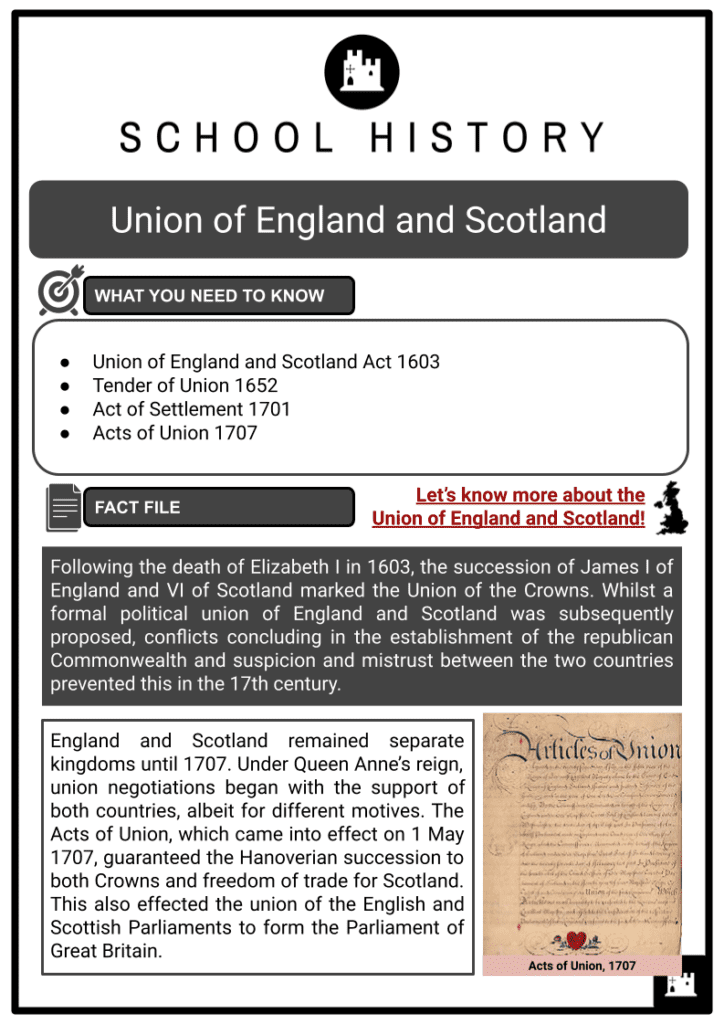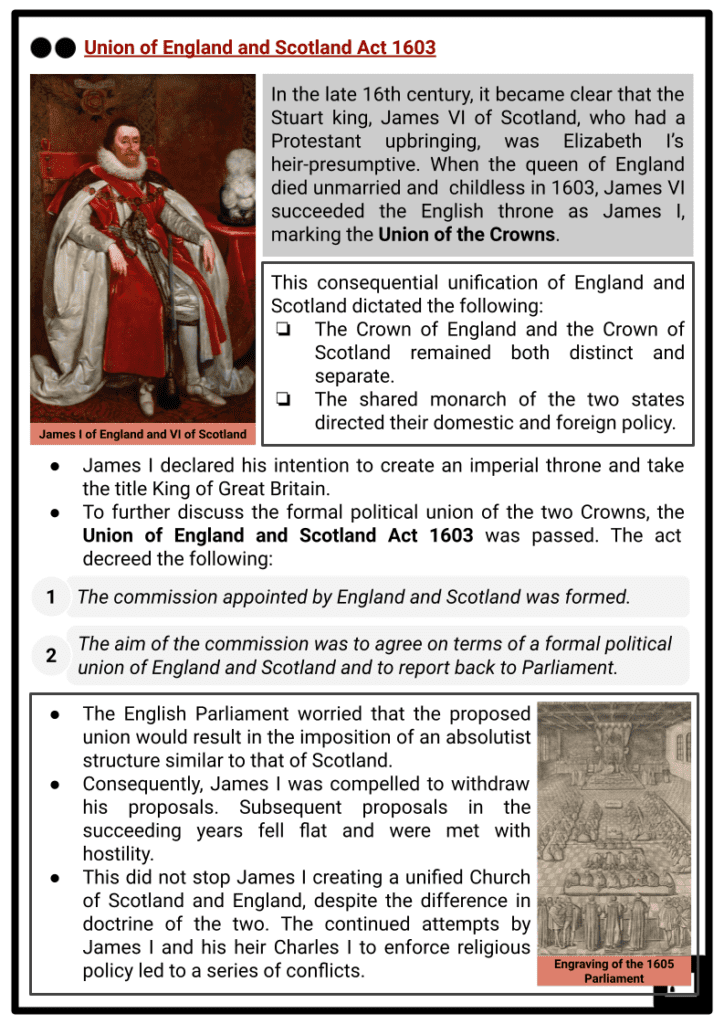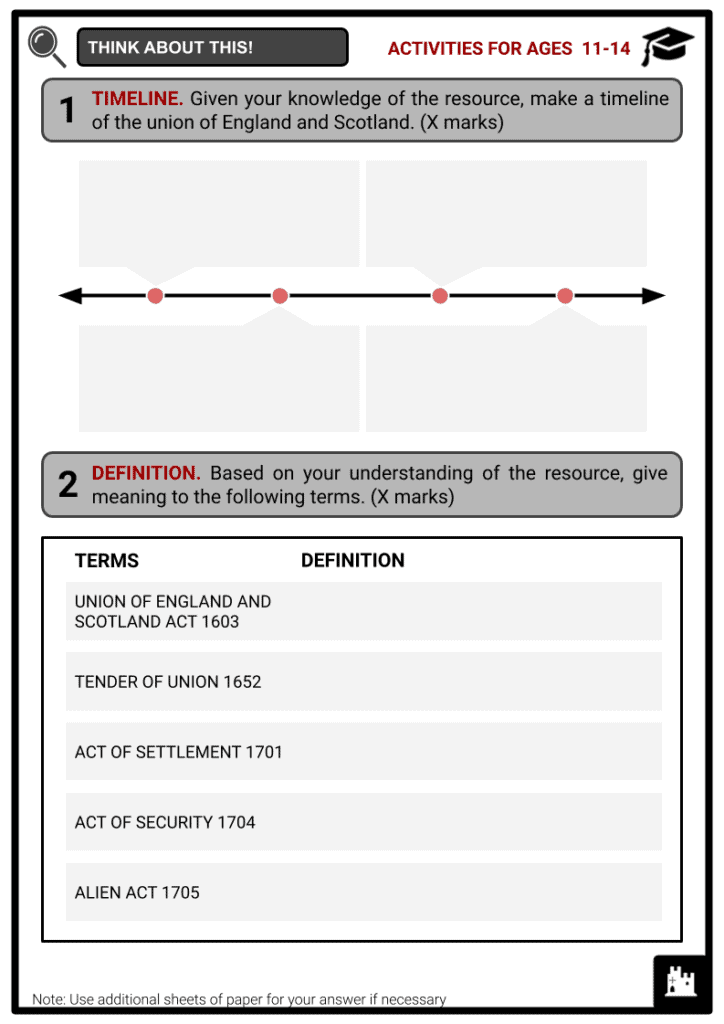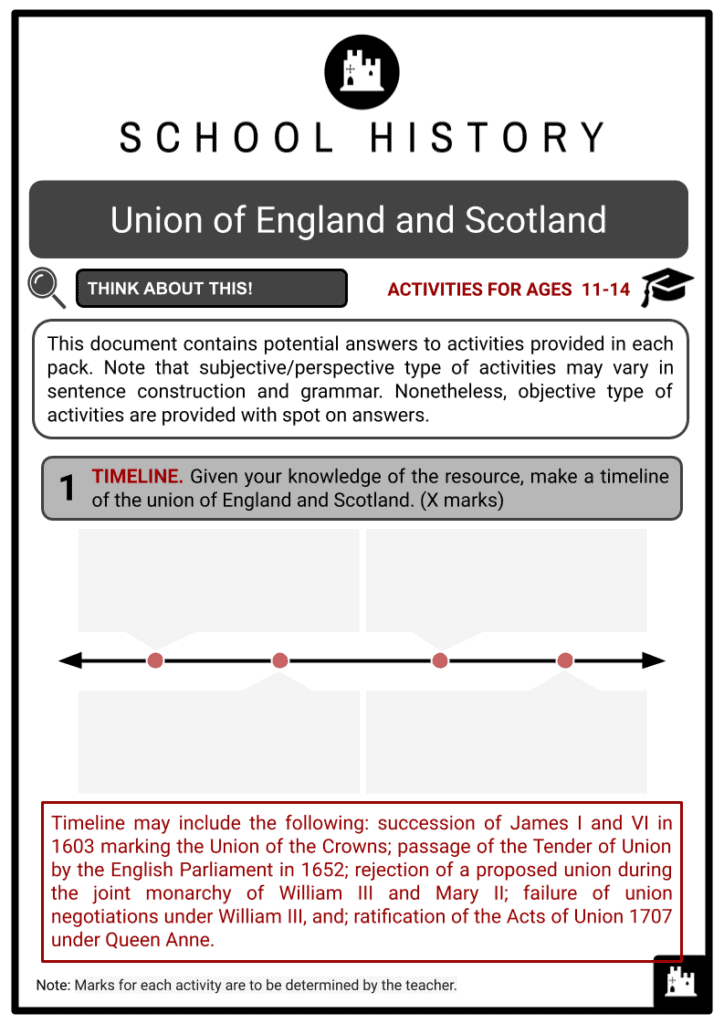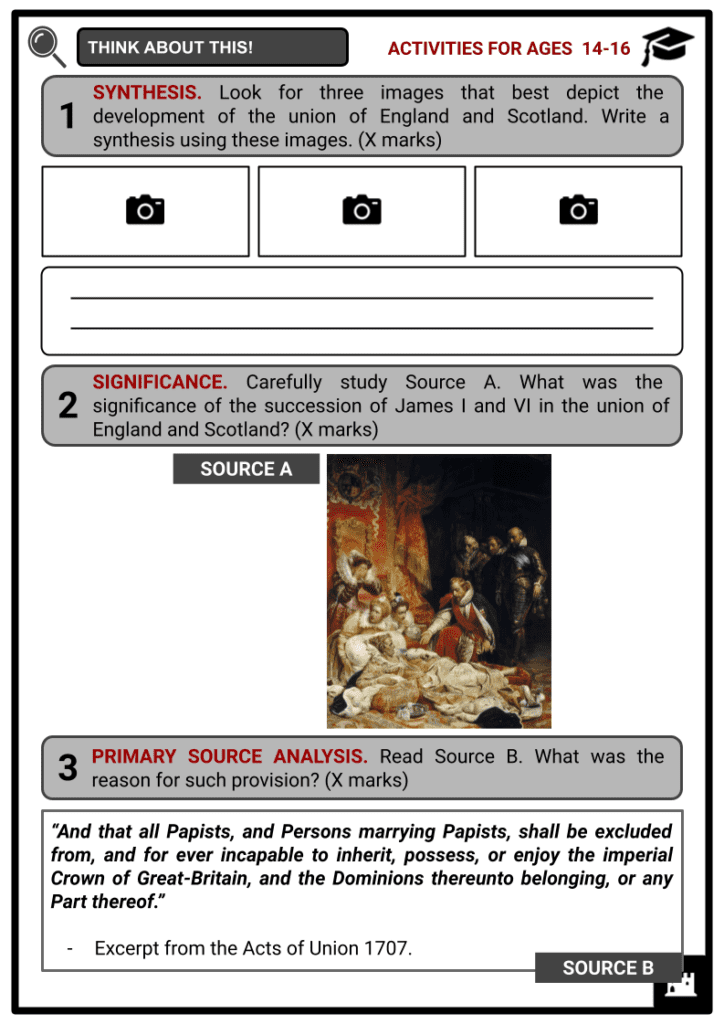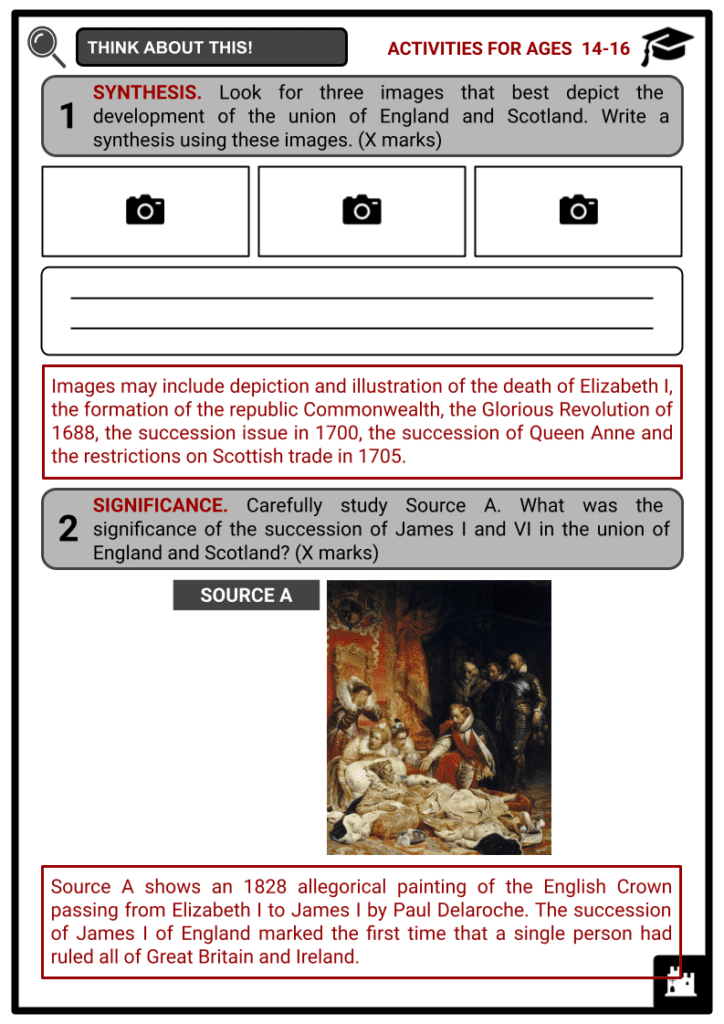Download the Union of England and Scotland Worksheets
Do you want to save dozens of hours in time? Get your evenings and weekends back? Be able to teach about the Union of England and Scotland to your students?
Our worksheet bundle includes a fact file and printable worksheets and student activities. Perfect for both the classroom and homeschooling!
Table of Contents
Add a header to begin generating the table of contents
Summary
- Union of England and Scotland Act 1603
- Tender of Union 1652
- Act of Settlement 1701
- Acts of Union 1707
Key Facts And Information
Let’s know more about Union of England and Scotland!
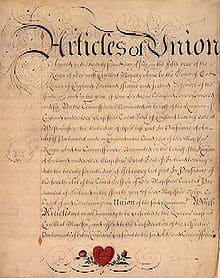
- Following the death of Elizabeth I in 1603, the succession of James I of England and VI of Scotland marked the Union of the Crowns. Whilst a formal political union of England and Scotland was subsequently proposed, conflicts concluding in the establishment of the republican Commonwealth and suspicion and mistrust between the two countries prevented this in the 17th century.
- England and Scotland remained separate kingdoms until 1707. Under Queen Anne’s reign, union negotiations began with the support of both countries, albeit for different motives. The Acts of Union, which came into effect on 1 May 1707, guaranteed the Hanoverian succession to both Crowns and freedom of trade for Scotland. This also effected the union of the English and Scottish Parliaments to form the Parliament of Great Britain.
Union of England and Scotland Act 1603
- In the late 16th century, it became clear that the Stuart king, James VI of Scotland, who had a Protestant upbringing, was Elizabeth I’s heir-presumptive. When the queen of England died unmarried and childless in 1603, James VI succeeded the English throne as James I, marking the Union of the Crowns.
- This consequential unification of England and Scotland dictated the following:
- The Crown of England and the Crown of Scotland remained both distinct and separate.
- The shared monarch of the two states directed their domestic and foreign policy.
- James I declared his intention to create an imperial throne and take the title King of Great Britain.
- To further discuss the formal political union of the two Crowns, the Union of England and Scotland Act 1603 was passed. The act decreed the following:
- The commission appointed by England and Scotland was formed.
- The aim of the commission was to agree on terms of a formal political union of England and Scotland and to report back to Parliament.
- The English Parliament worried that the proposed union would result in the imposition of an absolutist structure similar to that of Scotland.
- Consequently, James I was compelled to withdraw his proposals. Subsequent proposals in the succeeding years fell flat and were met with hostility.
- This did not stop James I creating a unified Church of Scotland and England, despite the difference in doctrine of the two. The continued attempts by James I and his heir Charles I to enforce religious policy led to a series of conflicts.
Tender of Union 1652
- The 17th-century Wars of the Three Kingdoms were fought over issues of governance and religion, and involved rebellions, civil wars and invasions. These concluded with the establishment of the republican Commonwealth of England. The English Parliament declared the Tender of Union 1652.
- Under the Tender of Union 1652:
- The Scottish Parliament was permanently dissolved.
- Scotland was incorporated into, and became one Commonwealth with England.
- Scotland was given 30 seats in the Westminster Parliament.
- The Tender of Union was not completed until an Act of Union was ratified by the Second Protectorate Parliament on 26 June 1657.
- Scotland’s integration into the Commonwealth meant free trade between Scotland and England.
- However, the economic benefits were diminished by the costs of military occupation.
- Since the union came with heavy taxes and military rule, it gained little popular support in either Scotland and England.
- The union was dissolved following the Restoration of Charles II in 1660.
- Under Charles II, talks regarding political union were revived but later abandoned.
- James II of England and Ireland and VII of Scotland succeeded his brother Charles II with widespread support in all three countries. However, his popularity eventually diminished due to his pro-Catholic policies in Protestant England.
- The Roman Catholic James II and VII was deposed in the Glorious Revolution of 1688.
- During the joint monarchy of William III and Mary II, a proposed union was opposed both by the Presbyterian majority in Scotland and the English Parliament.
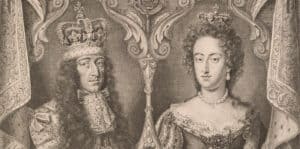
Act of Settlement 1701
- From 1700-1705, the succession crisis haunted William III after his wife, Mary II, died in 1694. Bearing no children, the next in line was William’s Protestant sister-in-law, Princess Anne.
- Princess Anne married Prince George of Denmark in 1684, but her pregnancies eventually failed due to miscarriages.
- Born in 1689, Prince William, Duke of Gloucester, was Anne’s only child who survived. However, the prince, having being born with a health problem, eventually died in 1700, after suffering from smallpox.
- This failure of William III and Mary II and Anne to produce any surviving heir, coupled with the perceived threat posed by pretension to the throne by the remaining Roman Catholic Stuarts, prompted the passage of the Act of Settlement 1701.
- The Act of Settlement 1701 had the important provisions:
- The throne would pass to the Electress Sophia of Hanover, a granddaughter of James VI and I and a niece of Charles I, and her Protestant descendants only.
- Those who were Roman Catholics and who married Roman Catholics were barred from ascending the throne.
- Also in 1701, the French King Louis XIV abruptly proclaimed that James Edward Stuart, son of the deposed James II and VII, was the rightful king of England, Scotland and Ireland. This succession issue had further worried William III.
- To stabilise the relationship between Scotland and England and the solidarity between the two kingdoms, William III pushed for union negotiations by the start of 1702.
- He sent a message to both the English and Scottish Parliaments, urging for the union of the kingdoms with a single parliament. It was also his way of securing the line of succession against the Jacobites, supporters of the deceased James II and VII and his Catholic lineage.
- However, the king died on 8 March 1702. He was succeeded by his sister-in-law, Princess Anne.
Acts of Union 1707
- Following Queen Anne’s ascension, the union negotiations pushed through. In principle, the parliamentary union was agreed upon, so was the Hanoverian succession, but the English commissioners did not allow Scotland to gain access to trade with their colonies and asked the Scots to pay the same taxes as the English. This caused great conflict between the two kingdoms.
- After the union commission in London was adjourned on 3 February 1703, Scotland did not prioritise the union negotiations, due to issues in the market and trade that England was very insistent about.
- Meanwhile, the Scottish Parliament, displeased with the Act of Settlement, passed the Act of Security in 1704.
- Under this act, Scotland reserved the right to choose its own successor to Queen Anne and explicitly required a choice different from the English monarch unless the English were to grant free trade and navigation.
- The English Parliament then passed the Alien Act 1705, which designated Scots in England as 'foreign nationals' and blocked about half of all Scottish trade by boycotting exports to England or its colonies, unless Scotland came back to negotiate a union.
- In 1705, Queen Anne asked for the union to make progress, which left the Scottish Parliament with no choice but to negotiate.
- After English and Scottish commissioners appointed by Queen Anne were finalised, the union negotiations began. These union talks were held at Whitehall in London in 1706. After a few months, both Parliaments secured what they wanted.
- England was guaranteed that the royal house of Hanover would succeed Anne to the Scottish Crown.
- Scotland was guaranteed to gain access to English colonial markets in North America and the West Indies in order to improve its economy.
The Acts of Union 1707:
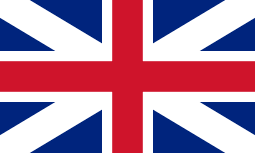
- The Acts of Union were composed of 25 Articles agreed upon by the English and Scottish Parliaments. Under the acts, England and Scotland would be united by the name of Great Britain, which also meant that the flags of St George and St Andrew would be combined.
- The United Kingdom of Great Britain would follow the Hanoverian succession, which excluded all Catholic heirs in line.
- The Parliament would be known as The Parliament of Great Britain, binding the two governmental systems into one.
- The union agreement included concerns about trades, taxes and debts. Since Scotland could not pay taxes at the level of England, some exemptions on taxable items such as paper, windows, coal, salt and malt were made.
- The Scottish Parliament ratified the treaty in January 1707 with only minor amendments, and the English ratified it soon after. The acts came into effect on 1 May 1707, eventually creating a new united parliament that consisted of both English and Scottish members.
- By separate statutes annexed to the treaty, the Presbyterian Church of Scotland and the Episcopal Church of England were secured against change.
- Consequently, Scotland discontinued its own coinage, system of weights and measures, and customs to conform with English standards and establish a unified British system. Meanwhile, each country maintained its own legal system and established Church.
Image Sources
- https://upload.wikimedia.org/wikipedia/commons/thumb/1/16/Articles_of_Union_1707.jpg/220px-Articles_of_Union_1707.jpg
- https://www.royal.uk/sites/default/files/images/encyclopaedia/editrs365881_603191-lpr_0.jpg
- https://upload.wikimedia.org/wikipedia/commons/thumb/f/f2/Flag_of_Great_Britain_%281707%E2%80%931800%29.svg/255px-Flag_of_Great_Britain_%281707%E2%80%931800%29.svg.png

